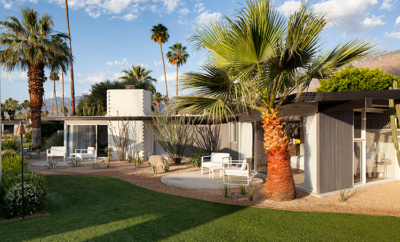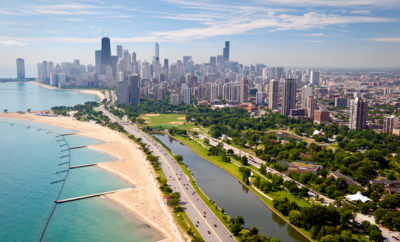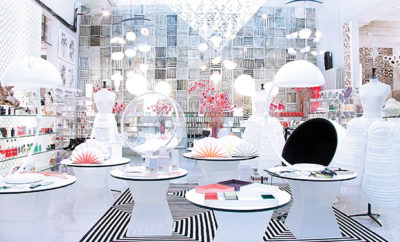 One of Stockholm’s underground Tunnelbana stops, T-Centralen, with art by Per-Olov Ultvedt. MARKUS HALLBERG PHOTO.
One of Stockholm’s underground Tunnelbana stops, T-Centralen, with art by Per-Olov Ultvedt. MARKUS HALLBERG PHOTO.
Design Destination
Design Destination: Stockholm
TO STROLL ALONG STOCKHOLM’S HARBORS is to inhale the essentials of the city’s largesse and welcoming grandeur: the waterways between Lake Mälaren and the Baltic Sea are soothing, even when one cannot tell which embankments are natural and which are artificial. No matter the weather, the sky always feels expansive and alive with light. Every visitor can feel the harbor is theirs for the taking, with dozens of ferries on call, and long urban perspectives that beckon. It is hard to call any street the heart of the city: both late nineteenth–century opulence and mid-century egalitarian design spill this way and that, and contemporary landscapes mix it up.
The city’s “SL” transport-guide app will help you zigzag and island-hop around town using the city’s punctual rapid transport. After beginning a voyage in the grim anxiety of the New York City subway or London’s sweaty Tube, Stockholm’s metro, the Tunnelbana (or the “T-Bana”), is worthy of inclusion in the cultural legend of “Swedish grace,” a 1920s term. Start near Stockholm Central Station at the café Vete-Katten, where you’ll find the world’s most genteel bottomless cup of coffee, ample pastries, and a thriving institution with decor and customers who often date from a quieter, gentler era. The aromatherapy of kardemummabullar (cardamom-flavored buns) eases jet lag, winter or summer.
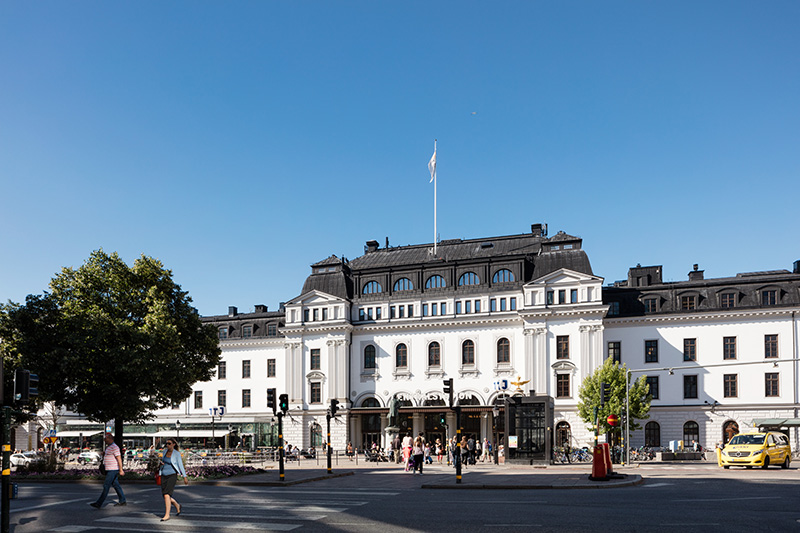
Stockholm’s Central Station. PER MYREHED PHOTO.
Revved up for sightseeing at the historical center of the city, begin at the Slussterrassen, a plaza above the sluice where fresh water hits saltwater. For a century, locals and tourists have hopped on an elevator there to take in views of the city, so ride up to the restaurant overhead, Eriks Gondolen, and enjoy hearty refreshment and the vista, day or night. In darkness, one can enjoy the quaint neon advertisement for Stomatol toothpaste, now landmarked. That electric dash of toothpaste might be deeply emblematic of national identity; after all, in the 1930s a Swedish museum director believed art “like the toothbrush” should no longer be just an upper-class pleasure.
A trip into a monument of Swedish democracy might begin via the T-Bana to Odenplan to genuflect before Gunnar Asplund’s 1928 city library, a salmonorange edifice with stucco motifs featuring hieroglyphics that seem at once humanist and functionalist. Don’t miss the children’s room, purpose-built for storytelling and featuring a fantastical mural painted by Nils Dardel.
For more impressive views and promontories, jump on the ferry to the Moderna Museet on Skeppsholmen, an island of centuries-old military structures adapted for cultural institutions. Rafael Moneo designed the Moderna Museet to blend in quietly with the existing architecture. Inside one can get up to date with contemporary Swedish artists, such as Charlotte Gyllenhammar. In the adjoining ArkDes museum is a long-term installation, Architecture in Sweden, chronicling a thousand years of the country’s architecture through the display of over eighty models; Young Swedish Design 2019, on view until the end of March, highlights new designs by up-and-coming Swedish creatives. The twenty-five featured designers’ work was mounted in tandem with Stockholm’s annual Design Week in February, a city-wide affair of intimate events as well as an opportunity to see innovative student work and high-end retailers at the convention center in Älvsjö, a ten-minute ride from the city center.
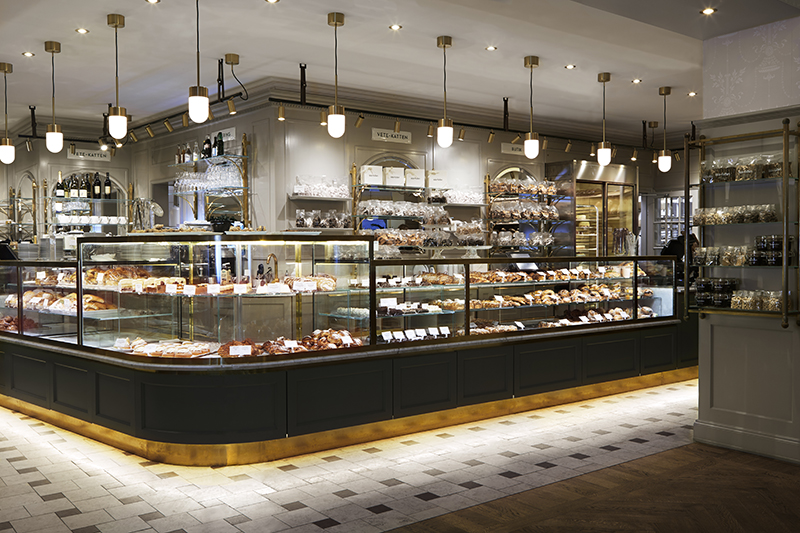
Vete-Katten’s pastry counter. SUSANNA BLÅVARG PHOTO.
Another destination via the T-Bana is the Kungsträdgården stop, where artist Ulrik Samuelson’s decades- old decoration of the underground station, with its menagerie of statues and murals, remains a lively immersion in postmodernism. Fountains, vines, precariously placed busts, and colorful terrazzo make the station stunning enough to distract more than a few travelers.
A few hundred yards from the metro exit is the newly restored Nationalmuseum, an 1866 building whose interiors now sing in a bright color palette after years of being shuttered and decades of being hidden underneath drywall. The costly refurbishment also reopened more than three hundred windows, letting in the harbor light and a view of the calming horizon. A sweeping survey of Swedish design includes the work of many luminaries, from masterworks by painter Anders Zorn to a luxurious cabinet made by architect and city planner Uno Åhrén before he gained notoriety as a functionalist. The ground floor has been reborn as a civic commons with dining, shopping, and lounging around the sculpture courtyard.

The Moderna Museet Stockholm is located on the island of Skeppsholmen. © MODERNA MUSEET, ÅSA LUNDÉN PHOTO.
Entering the museum’s grand staircase, immense new light fixtures hang beside Carl Larsson’s century- old murals and cast shadows across their top third. But after this unsightly contribution by the renowned Wingårdhs firm, the renovation has a softer and gentler touch. Gert Wingårdh, whose other high-profile projects include the Stockholm Arlanda Airport air-traffic control tower and the high-rise hotel-commercial Victoria Tower on the city’s outskirts, worked at the behest of the National Property Board Sweden.
The museum restaurant opened in October 2018 and is a smashing success for its new Nordic cuisine and its furnishings. The elegant interior is the result of the museum’s very own artistic project, NM&—A New Collection, which celebrates Swedish design and, where possible, craftsmanship, too, by bringing designers together. Museum curator Helena Kåberg, steward of thousands of ancient treasures, champions the idea of the “museum as stimulus to the entire production chain—from idea to finished product.” Some of the new designs in the restaurant are also intended for sale; all are intended to stimulate and showcase Swedish talents.
By commissioning new furniture, the museum returns to its Victorian origins as an arbiter of applied art and national identity. Some touches are very subtle, such as the new gallery benches from the design team Folkform that integrate allusions to both midcentury modernism and Victorian style in the rhythm of the buttoned leather cushions. The main dining chair is by TAF, a direct homage to Sven Markelius’s concert house design, and made by Artek, the company founded by the Aaltos.
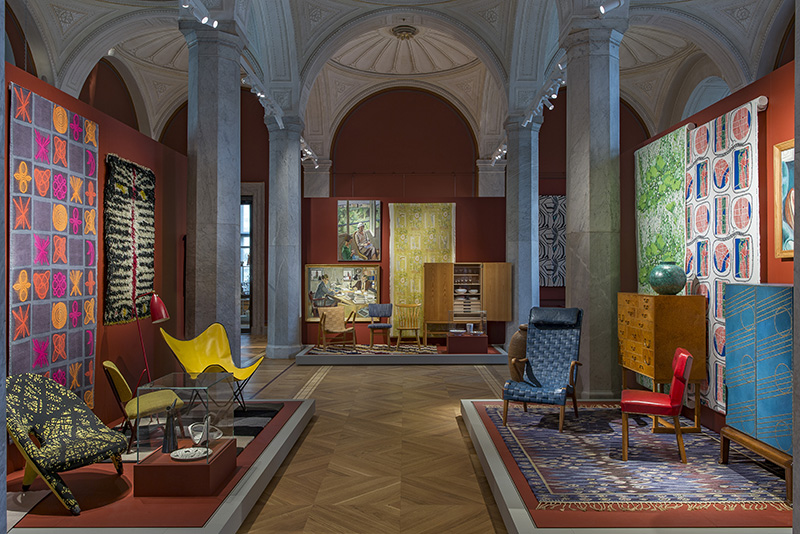
One of the galleries in Stockholm’s Nationalmuseum. ANNA DANIELSSON PHOTO, COURTESY OF NATIONALMUSEUM.
NM& produced over eighty objects, both deluxe bespoke and affordable luxuries. Carina Seth Andersson, Matti Klenell, Stina Löfgren, and the two principals of the firm TAF, Gabriella Gustafson and Mattias Ståhlbom, comprised the five core designers for the restaurant project, who then brought in an even larger network of designers and manufacturers. The team made solo and group affairs; the largest chandelier is credited to no fewer than eight of the designers. Many of the designs shrewdly combine digital production and laborious handcraft, resulting in a visual and tactile feast. Klenell’s upholstered Kavalett armchair is made in large numbers by Swedese, for example, but in the museum restaurant is upholstered with Åsa Pärson’s handwork in addition to power-loomed yardage. Some glassware and tableware are for sale in the museum shop, and prototypes and process drawings are on display in the Nationalmuseum’s Design Depot gallery. Videos of production, from glassblowing to weaving rattan furniture, make for a lively display.
The family of NM& is also on view elsewhere around town. In the legendary Svenskt Tenn homefurnishing store one can acquire yards of Josef Frank’s Manhattan fabric or the bubbly 2009 Dew vase designed by Carina Seth Andersson, which has a hefty biomorphic abstraction and light buoyancy all at once. She also has a showroom (Kocksgatan 52, Sodermalm) that is open on Tuesdays and Saturdays and by appointment. Across town on Sodermalmstorg near Slussen, one can stop in the gallery Konsthantverkarna and admire the work of makers such as Åsa Pärson, whose weavings were hung on the wall as art, not upholstery, in an exhibition that took place in February.
Behind Svenskst Tenn and Carl Malmsten on Strandvägen, stores with classic twentieth-century home furnishings, lies the neighborhood of Östermalm, where mid-century modernist designs and older antiques can be found in numerous smaller galleries. The design emporium Modernity always has an excellent range from which to select, but twentieth- century design in Sweden, as in the United States, fetches high prices. The department store NK (Nordiska Kompaniet) was where many an American curator went to buy limited edition and artistdesigned ceramics and glass in the 1950s, and it now has competition from the likes of Design House Stockholm, Designtorget, and even Åhléns, where some Swedish and other Scandinavian classics have been remade at affordable prices—and the customers are not only tourists.
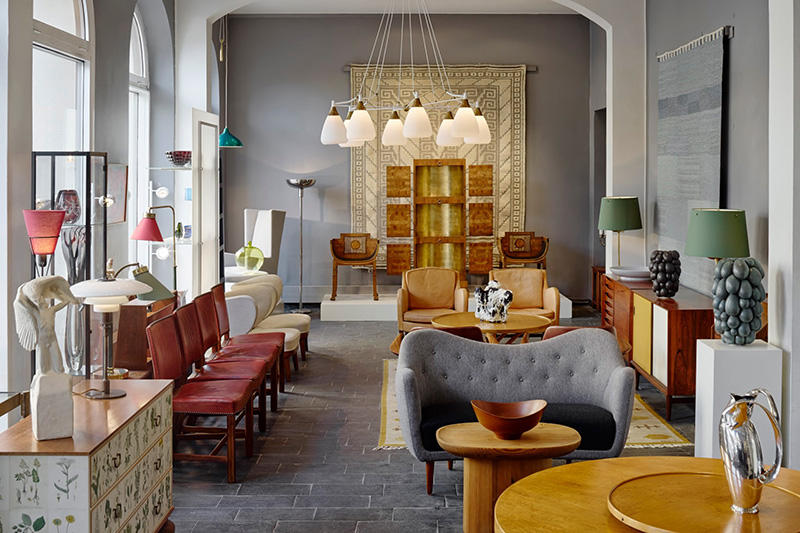
The showroom of Swedish gallery Modernity, which specializes in twentieth-century Scandinavian design. COURTESY OF MODERNITY.
If you are searching for an education in late twentieth- century furniture design and want to see where Ikea and anonymous mid-market production intersects with the treasures in the Nationalmuseum, then go to the Gårdet T-Bana stop and then hop on the number 1 bus to Frihamnsgatan, to the Möbeldesignmuseum (Museum of Furniture Studies), which opened in February 2018. Open storage gives you the chance to see the undersides of many classics, be they by Denmark’s Børge Mogensen or by lesser-known Swedish geniuses such as Bengt Johan Gullberg. (Nearby, Magasin III, Stockholm’s immense contemporary art space, lies dormant during a temporary closure.) The portside depot feels far from the city but only takes thirty minutes to get to—and the return trip should be on a ferry if it’s sunny.
Another ramble would take you from Asplund’s library at Odenplan to the international contemporary art institution Bonniers Konsthall, housed in a sleek, triangular glass building designed by Johan Celsing. Nearby are two projects that show the architectural firm of Wingardhs in wonderful form: the Sven-Harrys Konstmuseum, a golden treasure box erected by a fabulously successful builder to house his own art collection and which includes a re-creation of rooms of his eighteenth-century villa, and, steps away, is the Aula Medica in the world-famous Karolinska Institute on Solnavägen.
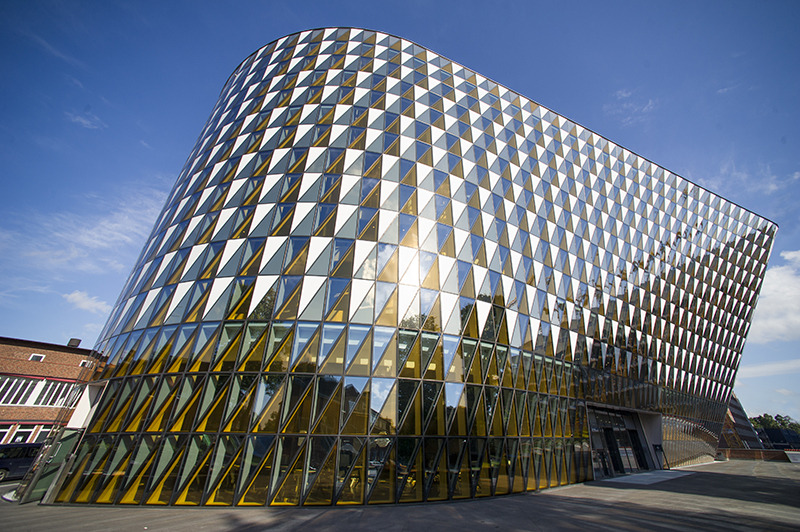
Aula Medica, the Karolinska Institute’s lecture hall complex. ULF SIRBORN PHOTO.
If you are up for seeing more waterways and peeking down the mysterious Stockholm archipelagos, then bus out to Gustavsberg, where the old ceramics factory is now a part of the Nationalmuseum and you can savor all the decades of such prolific artists as Stig Lindberg. While there, check out contemporary art at the Gustavsbergs Konsthall. Many artists have their studios in the neighborhood, and, once again, ferries permit creative itineraries.
The Nationalmuseum is a great base for any of these excursions, as it has every amenity, from lockers to bathrooms worthy of aesthetic admiration, and Wi-Fi. If you’re feeling especially jaunty, download the app for one of the electric scooter companies (Voi or Lime) and head out to Djurgården. Fly past the Vasa Museum, where crowds line up to see the world’s best-preserved spectacular failure of naval design from the seventeenth century, and the ABBA Museum, as well as the always worthwhile Nordiska Museet (you can come back another time). Instead, go farther down the road, where Prince Eugen’s art museum and the Thiel Gallery permit you entrance into Stockholm’s most elegant domestic interiors and gardens. Life in 1900 still feels like a balm. The Thiel Gallery houses the collection of banker Ernest Thiel, including works by Edvard Munch, in an interior fully aware of Continental taste but romanticizing Swedish identity, too. Its turn-of-the-century ambiance extends from the death mask of Nietzsche to an immense sofa and seating area by Gustaf Fjaestad carved in high relief. The villa was designed to entertain and showcase modern art and design and it became a hothouse for artists. Ask the gallery attendant to pull out the pocket doors where huge Fjaestad tapestries celebrating the local outdoors are dramatically hidden. Century-old woven wool has never been so cooling and calming! Depictions of Stockholm’s waterways influenced by Hiroshige and Courbet in equal parts are also wondrous. When you’re ready, go back outdoors again and savor the real thing.

Dew vase by Carina Seth Andersson, 2009, Svenskt Tenn. COURTESY OF SVENSKT TENN.
WHERE TO STAY
Housed in an arts and crafts building, Ett Hem offers twelve uniquely designed rooms. Interior designer Ilse Crawford transformed the 1910 former private residence (Ett Hem translates to “a home”) into an inviting hotel furnished with a mix of Scandinavian antiques and contemporary design. Seasonal and locally inspired dishes can be enjoyed in the open kitchen, library, or the greenhouse overlooking the garden. etthem.se
Hotel Skeppsholmen—situated on a small island, next door to the contemporary art center Moderna Museet— provides a serene, waterfront retreat just a quick ferry ride from the heart of the city. Claesson Koivisto Rune Architects renovated the landmark building, dating to the late seventeenth century, by preserving the original details while adding modern-day touches. hotelskeppsholmen.se
Originally built as the head office for the Södra Sverige banking company, the aptly named Bank Hotel opened its doors to guests last year. Designed by architect Thor Thorén in 1910 as a modern interpretation of a Renaissance palace, the building is an exuberant commingling of architectural styles from art nouveau to art deco. The hotel’s restaurant, Bonnie’s, with its vaulted glass ceiling and plush green velvet seating, is well worth a visit, as are the Papillion bar and the discreetly tucked-away speakeasy Sophie’s, for a delectable cocktail. bankhotel.se
WHERE TO EAT
In addition to the new restaurant in the Nationalmuseum, try Frantzén, the only three-Michelin-star restaurant in Sweden. It has rightfully earned this culinary badge of honor with its artfully crafted tasting menu melding Scandinavian cuisine with Japanese flavors. The dimly lit, twenty- three-seat restaurant echoes the culinary influences with its understated, elegant design. restaurantfrantzen.com
Sturehof, Stockholm’s first seafood restaurant, has been a longtime staple in the city since it first opened at the turn of the twentieth century. Many of the original dishes have remained on the menu, such as the bouillabaisse and turbot with brown butter. Renowned architect Jonas Bohlin gave the restaurant a much-needed makeover. sturehof.com


